|
Computational
Science
Partial
Differential
Equations
Modern
Analysis
Dynamical
systems
and
Ordinary
Differential
Equations
Differential
Geometry
Topology
Complex
Geometry
and
Complex
Analysis
Automated
Discovery
and
Graph
Theory
Algebra
Financial
Mathematics
Statistics
Math
Biology
Computational
Science
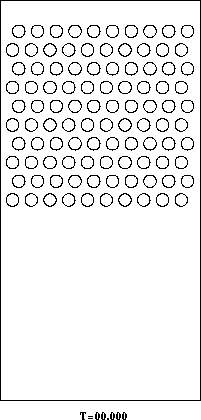 (Amundson,
Dean,
Glowinski,
He,
Kuznetsov,
Pan,
Sanders,
Hoppe)
The
computational
science
program
is currently
the
most
active
in the
training
of PhD
students
in our
department.
Graduates
from
this
program
are
in demand
in both
industry
and
academia.
This
group
runs
a weekly
interdisciplinary
seminar.
(Amundson,
Dean,
Glowinski,
He,
Kuznetsov,
Pan,
Sanders,
Hoppe)
The
computational
science
program
is currently
the
most
active
in the
training
of PhD
students
in our
department.
Graduates
from
this
program
are
in demand
in both
industry
and
academia.
This
group
runs
a weekly
interdisciplinary
seminar.
The
specialties
in this
group
include
numerical
linear
algebra
(K),
finite
element
methods
for
partial
differential
equations
including
domain
decomposition
methods
and
fictitious
domain
methods,
optimal
control
and
large
scale
optimization
(D,G,H,Ho),
computational
fluid
dynamics
(D,G,H,Ho,K,P,S)
and
computer
graphics
(S).
There
are
many
areas
of computational
science
of interest
to prospective
graduate
students:
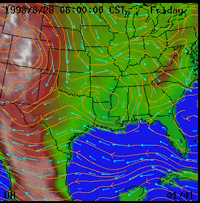 Direct
numerical
simulation
of particulate
flow
(D,G,H,K,P);
large
scale
parallel
computation
for
particulate
flow
in visco-elastic,
Newtonian
and
non-Newtonian
fluids
(e.g.,
fluidization
and
sedimentation
of solid
particles
(G,K,P)
and
electro-
and
magnetorheological
fluids
(Ho));
investigation
of advanced
interior-point
optimization
methods
for
the
treatment
of collisions
(D,G)
or in
structural
optimization
(shape
and
topology
optimization
(Ho));
efficient
parallel
solvers
for
diffusion
problems
in heterogeneous
anisotropic
media
(K);
accurate
numerical
algorithms
for
geophysical
electrodynamics
(K);
supersonic
and
hypersonic
flows,
particularly
for
spacecraft
reentry
simulation
with
equilibrium
and
non-equilibrium
chemistry
(S);
computational
electromagnetics
and
numerical
methods
for
the
simulation
of flow
in porous
media
(G,Ho,K);
Molecular
Dynamics
with
applications
in materials
science
(Ho);
biomimetics,
in particular
biotemplating
(Ho);
radiosity
methods
for
global
illumination
in computer
graphics
(S).
Direct
numerical
simulation
of particulate
flow
(D,G,H,K,P);
large
scale
parallel
computation
for
particulate
flow
in visco-elastic,
Newtonian
and
non-Newtonian
fluids
(e.g.,
fluidization
and
sedimentation
of solid
particles
(G,K,P)
and
electro-
and
magnetorheological
fluids
(Ho));
investigation
of advanced
interior-point
optimization
methods
for
the
treatment
of collisions
(D,G)
or in
structural
optimization
(shape
and
topology
optimization
(Ho));
efficient
parallel
solvers
for
diffusion
problems
in heterogeneous
anisotropic
media
(K);
accurate
numerical
algorithms
for
geophysical
electrodynamics
(K);
supersonic
and
hypersonic
flows,
particularly
for
spacecraft
reentry
simulation
with
equilibrium
and
non-equilibrium
chemistry
(S);
computational
electromagnetics
and
numerical
methods
for
the
simulation
of flow
in porous
media
(G,Ho,K);
Molecular
Dynamics
with
applications
in materials
science
(Ho);
biomimetics,
in particular
biotemplating
(Ho);
radiosity
methods
for
global
illumination
in computer
graphics
(S).
Partial
Differential
Equations
(Auchmuty,
Canic,
Fitzgibbon,
Keyfitz,
Sanders,
Wagner)
The
group
is active
in training
PhD
students
and
is a
regular
host
of the
Texas
PDE
Conference.
Current
research
areas
that
involve
students
and
postdocs
include
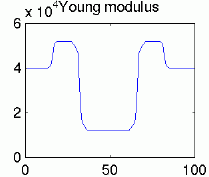 Conservation
Laws
(Canic,
Keyfitz,Wagner)
Self-similar
solutions
of
multidimensional
problems:
degenerate
elliptic
equations;
classical
solutions
of
free-boundary
problems
and
the
development
of
efficient
numerical
algorithms;
existence
theorems
for
systems
of
mixed
type
(coupled
hyperbolic
and
elliptic
equations);
shock
reflection
problems~(C,
K;
postdoc
Kim).
Mathematical
properties
of
nonhyperbolic
equations:
singular
shocks;
influence
of
viscosity~(K,
C;
recent
PhD
student
Reiff;
current
PhD
student
Mora).
Reacting
compressible
flows;
the
dynamics
of
hyperelastic
materials~(W).
Conservation
Laws
(Canic,
Keyfitz,Wagner)
Self-similar
solutions
of
multidimensional
problems:
degenerate
elliptic
equations;
classical
solutions
of
free-boundary
problems
and
the
development
of
efficient
numerical
algorithms;
existence
theorems
for
systems
of
mixed
type
(coupled
hyperbolic
and
elliptic
equations);
shock
reflection
problems~(C,
K;
postdoc
Kim).
Mathematical
properties
of
nonhyperbolic
equations:
singular
shocks;
influence
of
viscosity~(K,
C;
recent
PhD
student
Reiff;
current
PhD
student
Mora).
Reacting
compressible
flows;
the
dynamics
of
hyperelastic
materials~(W).-
Reaction-Diffusion
Equations
(Auchmuty,Fitzgibbon,Sanders).
Well-posedness
and
a
priori
estimates,
convergence
of
singular
perturbations,
and
long-term
dynamics
of
abstract
nonlinear
evolution
equations,
integral
and
partial
integro-differential
equations,
and
parabolic
and
elliptic
systems~(F);
Stefan-Maxwell
diffusion,
nonlinear
boundary
value
problems,
and
Hamilton-Jacobi
equations~(S);
analysis
of
vortices
and
div-curl
boundary
value
problems,
and
eigenvalue
problems
for
operators
of
classical
field
theories
and
linear
stability
analyses~(A).
-
Models
from
Engineering,
Ecology
and
Environment
(Auchmuty,Fitzgibbon).A
hybrid
computational
and
analytical
approach
to
developing
models
in
population
dynamics;
spatially
distributed
ecological
systems;
spatio-temporal
spread
of
infectious
diseases;
photo-chemical
production
and
atmospheric
dispersion
of
pollutants;
rotating
waves;
and
cardiac
modeling~(A,
F;
recent
PhD
students
Berry,
Gross;
current
student
Martynenko).
Modern
Analysis
(Auchmuty,
Blecher,
G.~Johnson,
Papadakis,
Paulsen,
Tucker)
The
analysis
group
has
an excellent
record
of producing
PhD
students
and
placing
them
in research
positions.
The
weekly
functional
analysis
seminar
is regularly
attended
by faculty
from
area
universities.
This
seminar
presents
current
research
at a
level
accessible
to graduate
students
and
is often
used
as to
present
short
courses.
This
group
is a
regular
host
of {\em
Functional
Analysis
Day}
at which
graduate
students
and
postdocs
from
area
universities
present
their
research.
Specific
areas
of current
research
include:
-
Classical
field
theories,
particularly
those
of
electromagnetics
and
mechanics
(Auchmuty).
Topics
include
representation
theorems,
trace
and
embedding
theorems,
analysis
of
linear
operators,
and
variational
principles.
Related
issues
include
nonconvex
duality
in
the
calculus
of
variations
and
convex
analysis.
-
Operator
spaces
and
completely
bounded
maps
(Blecher,Paulsen):
Operator
spaces
is
a
new
area
of
functional
analysis
providing
powerful
tools
with
applications
to
unitary
representations
of
groups,
C*-algebras,
von
Neumann
algebras,
and
operator
theory.
-
Interpolation
theory
(Paulsen):
existence
and
construction
of
functions,
belonging
to
a
special
family,
whose
graphs
pass
through
given
data
points.
A
typical
application
is
the
construction
of
an
electrical
circuit
that
at
given
frequencies
has
given
responses.
-
Wavelet
analysis
(Papadakis):
multiresolution
theory,
frame
theory
and
sampling
using
techniques
from
functional
and
harmonic
analysis.
See
Featured
Project.
Dynamical
Systems
and
Ordinary
Differential
Equations
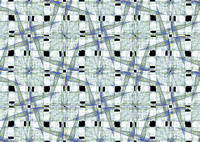 (Field,
Golubitsky,
Josic,
Torok,
Walker;
Stewart)
The
dynamical
systems
group
specializes
in systems
with
symmetry,
ergodic
theory,
and
applications.
This
group
runs
the
weekly
interdisciplinary
Nonlinear
Dynamics
seminar
jointly
with
colleagues
in Physics
and
Engineering
and
has
hosted
many
visitors
and
postdocs.
Ian
Stewart,
University
of Warwick,
is an
adjunct
professor
at UH
and
a frequent
visitor. (Field,
Golubitsky,
Josic,
Torok,
Walker;
Stewart)
The
dynamical
systems
group
specializes
in systems
with
symmetry,
ergodic
theory,
and
applications.
This
group
runs
the
weekly
interdisciplinary
Nonlinear
Dynamics
seminar
jointly
with
colleagues
in Physics
and
Engineering
and
has
hosted
many
visitors
and
postdocs.
Ian
Stewart,
University
of Warwick,
is an
adjunct
professor
at UH
and
a frequent
visitor.
Current
theoretical
interests
include
ergodic
theory
and
central
limittheorems,
in particular
for
symmetric
dynamical
systems
(F,T);
the
structure
of symmetric
attractors
(F,G,S);
coupled
cell
systems
(F,G,J,S);
generic
properties
of diffeomorphisms
and
flows
including
transitivity,
ergodicity,
and
rapid
mixing
(F,T);
classification
of cocycles
over
actions
of certain
groups
with
application
to rigidity
properties
(T);
the
extension
of spectral
theory
for
selfadjoint
differential
operators
to the
non-selfadjoint
case
(W).
Applications
of equivariant
dynamics
include
pattern
formation
(G,S,T),
bursting
(G,J),
hypermeander
of spirals
based
on ergodic-theoretic
techniques
in symmetric
systems
(F,T),
and
neuroscience
(G,J,T).
Differential
Geometry
Bao
works
on Riemann-Finsler
geometry
and
its
applications
to the
physical
sciences.
Current
investigations
concern
constant
curvature
metrics
(the
space
forms
problem),
and
conformal
deformations
of Finsler
metrics
(encompassing
issues
from
the
existence
of Ein\-stein-Finsler
metrics
to the
flow
of air
traffic).
Topology
Friedberg
studies
topological
algebra
and
topological
semigroups,specifically
the
representation
of uniquely
divisible
semigroups
as cone-like
structures
and
the
representation
of such
semigroups
by matrices.
Complex
Geometry
and
Complex
Analysis
Ji
works
on complex
analysis
and
complex
(CR)
geometry.
Current
research
is on
the
algebraicity
problem
of strongly
pseudoconvex
real
analytic
hypersurfaces
and
on proper
holomorphic
mappings
between
balls
in different
dimensional
spaces
(classification
of such
mappings,
and
estimate
of degrees
of rational
maps).
Ru
studies
complex
analysis
and
(complex
hyperbolic)
geometry.
Topics
include
the
geometric,
function
theoretic,
and
number
theoretic
properties
associated
with
an algebraic
variety
and
their
connections.
Faltings's
work
on the
Fermat
equation
is a
notable
illustration
of such
questions.
Automated
Discovery
and
Graph
Theory
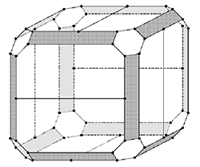 Fajtlowicz
has
developed
GRAFFITI,
an interactive
computer
program
capable
of making
mathematical
conjectures.
This
program
generates
conjectures
in graph
theory,
number
theory,
and
geometry.
GRAFFITI
has
also
made
conjectures
about
fullerenes,
the
new
form
of carbon.
Conjectures
by GRAFFITI
have
inspired
papers
by mathematicians
(Alon,
Chung,
and
Kleitman),
computer
scientists,
and
chemists.
Fajtlowicz
has
developed
GRAFFITI,
an interactive
computer
program
capable
of making
mathematical
conjectures.
This
program
generates
conjectures
in graph
theory,
number
theory,
and
geometry.
GRAFFITI
has
also
made
conjectures
about
fullerenes,
the
new
form
of carbon.
Conjectures
by GRAFFITI
have
inspired
papers
by mathematicians
(Alon,
Chung,
and
Kleitman),
computer
scientists,
and
chemists.
Both
undergraduate
and
graduate
students
can
do research
based
on GRAFFITI,
either
by continuing
its
development
or by
investigating
conjectures
generated
by the
program.
The
accessibility
by undergraduates
to original
research
is a
special
feature
of this
work.
Algebra
Fields
of interest
of the
algebra
group
include
number
theory,
group
and
module
theory,
rings
and
nearrings,
lattice
and
abstract
ideal
theory,
logic
and
foundations.
Hausen's
research
includes
the
relationship
between
algebraic
structures
and
associated
sets
of mappings
(e.g.~between
groups
and
their
automorphism
groups).
Current
research
topics
include
determining
whether
all
nonzero
abelian
2-groups
with
isomorphic
automorphism
groups
are
isomorphic;
characterizing
the
rings
$R$
such
that
every
$R$-homogeneous
map
between
any
two
nonsingular
$R$-modules
is a
homomorphism;
and
generalizing
the
concept
of $E$-rings
and
$E$-modules.
Kaiser
studies
lattices
for
logic
and
various
versions
of normality
in the
context
of universal
first
order
sentences,
and
epistemic
logic
(reasoning
about
knowledge).
The
department
cross-lists
his
courses
on automata
and
advanced
graduate
logic
with
Computer
Science.
Financial
Math
Financial
mathematics
is conerned
with
mathematical/statistical
modeling
and
analysis
of issues
relating
to risk
management
in the
financial
and
energy
markets.
Kao's
research
interests
include
the
applications
of computational
probability
and
statistics
in pricing
derivative
products
for
risk
management.
His
recent
work
have
evolved
around
problems
such
as pricing
NYMEX
Gas
Futures
contracts,
alternative
approaches
for
valuation
of spread
options,
Markov
regime
switching
models
for
electricity
spot
prices,
and
volatility
estimation
and
its
implications
in energy
risk
management.
Stochastic
processes
are a
common
model
for systems
whose
past history
influences
but does
not determine
its future
state,
which
are used
in financial
modelling
and in
many areas
of science.
M. Nicol
is interested
in the
theory
and application
of stochastic
processes.
For example,
finding
observations
of Benford's
law in
many types
of multiplicative
stochastic
processes,
investigating
the fine
structure
(such
as Hausdorff
dimension)
of invariant
measures
for stochastic
processes
satisfying
a contraction-on-average
condition,
and determining
statistical
behaviour
of models
arising
from economics,
physics
and biology,
in particular
the determing
of statistical
limit
laws such
as the
central
limit
theorem
and Brownian-motion
like behaviour
in a wide
variety
of stochastic
models.
Statistics
Decell's
specialty
is applied
statistics:
parameter
and
density
estimation,
statistical
pattern
recognition,
the
theory
of generalized
inverses,
and
statistical
signal
processing
of remote
sensing
data.
His
expertise
also
includes
applications
to powered
flight
guidance
and
orbital
mechanics.
Peters
has
interests
in Bayesian
statistics
and
deconvolution
density
estimation
with
applications
in geology.
Mathematical
Biology
There
are
several
faculty
members
who
have
done
work
in mathematical
biology,
or whose
work
is directly
applicable
to mathematical
biology.
Please
click
here
to find
more
information.
|